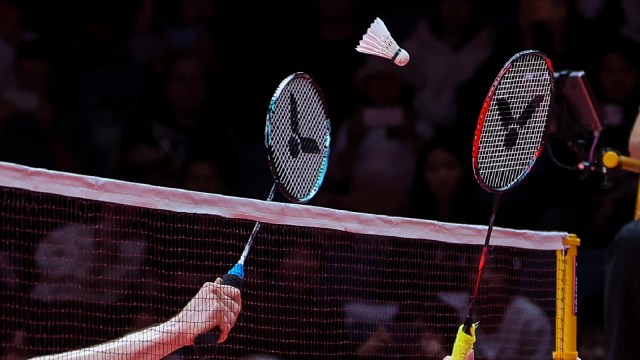ARTICLE AD BOX
 A new, updated relay system will be used in the BWF mixed team tournament that usually precedes the individual events. (File)
A new, updated relay system will be used in the BWF mixed team tournament that usually precedes the individual events. (File)
The proposed new 3×15 scoring system will be will be implemented at the individual events at the upcoming BWF World Junior Championships 2025 in Guwahati in October, the Badminton World Federation (BWF), in collaboration with the Badminton Association of India (BAI), confirmed.
And a new, updated relay system will be used in the mixed team tournament that usually precedes the individual events. It will be a best of three sets up to 45 points, with each set comprising five matches – one of each event from men’s singles, women’s singles, men’s doubles, women’s doubles and mixed doubles.
A version of the team relay system was first introduced at last year’s BWF World Junior Mixed Team Championships 2024.
In the individual tournament, the new three-by-15 scoring system will be trialled as part of the wider testing and analysis programme being rolled out by BWF. Both initiatives were approved by BWF Council at the recent BWF AGM in Xiamen, China.
What’s the 3×15 system?
Earlier this year, the BWF announced that the 3×15 system will be tested at selected Continental Championships, Grade 3 tournaments, national and international leagues, and national tournaments. The testing period is approximately April to September/October 2025. Towards the end of the testing period, BWF will survey key stakeholders at each tournament as well as an overall survey of all Members, Athletes’ Commissions (players), technical officials, and commercial partners. “BWF Council will make a final decision whether to propose this new system to the BWF Annual General Meeting 2026,” the governing body had said.
The 3×15 is already defined as part of the ‘Alternative Laws of Badminton’ – in simple terms, a match will consist of the best of three games. The game shall be won by the side that first scores 15 points (instead of the current 21). At 14-14, the game will continue to be played till one side gains a two-point lead first. In the current scoring system, 29-29 becomes the decisive point in a game, which will now change to 20-all. So the side scoring the 21st point will win the game in that scenario.
As recently as 2021, there was a big push from BWF to change the scoring system to 11 x 5 (best of 5, with 11 points to win a game). It turned out to be an incredibly close vote at the 82nd BWF AGM. The 11×5 proposal received 66.31% votes for and 33.69% against, but it was marginally short of the two-thirds majority needed (>66.67%)
What was the Indian reaction to the new format?
Story continues below this ad
BAI Secretary General Sanjay Mishra had said there was a mixed reaction from some of India’s top players when he sought feedback in February. “Our players are OK with a different system in leagues, but for the major events on tours, they think the existing system must continue. The feeling is that in a 15-point game, there is not enough time,” Mishra had told The Indian Express. “My opinion is that other Asian countries like China, Malaysia, and Indonesia may oppose it because it takes away their strengths of fitness and playing long rallies.”
Among the players, HS Prannoy who admitted it might suit older players like himself in terms of recovery, wasn’t sold on the system still. “It may shorten matches, but I’m unsure how it will help the sport. A 21-game format match usually lasts about 70 minutes, which isn’t excessively long. If we’re aiming for better viewership, we should consider changing other aspects like scheduling, broadcast, etc rather than the scoring,” he had told this taily.
What’s BWF saying?
BWF Secretary General Thomas Lund praised BAI and the Guwahati organising committee for implementing these rule changes. “We are delighted to present a forward-thinking championships promoting innovation for badminton and reflecting a progressive and modern approach by BAI, Guwahati and BWF,” Lund said.
“This is part of BWF’s wider long-term considerations for innovation in events and event delivery. The broader goal remains to modernise badminton in ways that protect athlete wellbeing while making the sport even more exciting and engaging for global audiences. It is essential that this process remains inclusive and well-informed, with any future decision guided by evidence, wide consultation, and what is in the best interest of badminton worldwide. That’s why it is necessary to test such innovations in live tournament settings and it is great that we have the endorsement and backing from our Member in India and the city of Guwahati who share the same vision as us.”
© IE Online Media Services Pvt Ltd



.png)
.png)
.png)


























 English (US) ·
English (US) ·